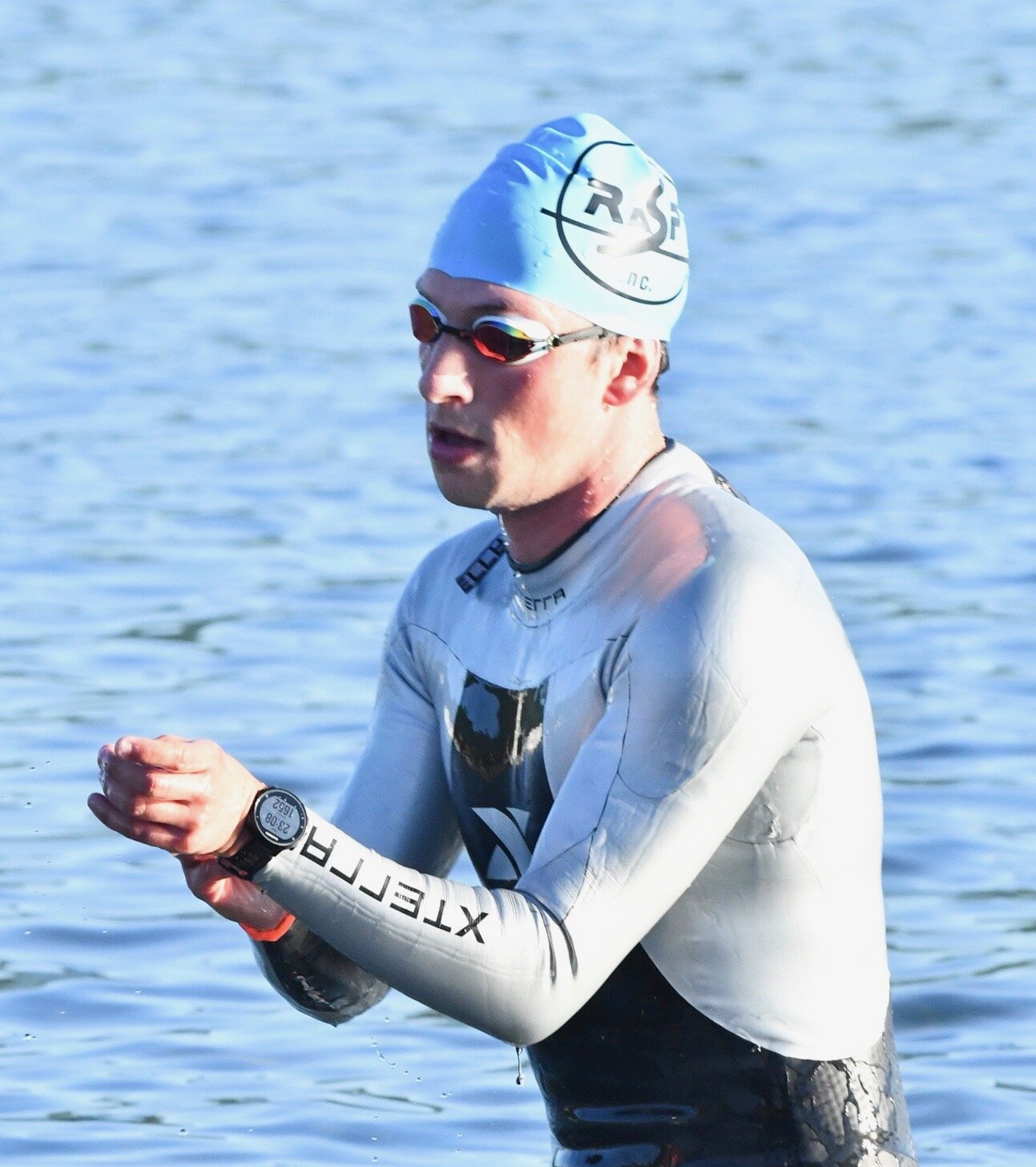From Swimmer to Triathlete
By: Chris Klein aka Mr. Klein
I was a competitive swimmer for a decade before I started racing triathlons. Earlier in my triathlon career, the swim was my time to perform and the bike and runs legs were a relentless (and sometimes unsuccessful) battle to hold on to the lead. Since working with Jim and joining the Endurance Drive, I’ve learned how to better utilize my strength as a swimmer to give me a competitive advantage in triathlon.
Time-wise, the swim in a triathlon is the least important leg. The difference between a good swim and a bad swim in an IRONMAN event is a matter of minutes, whereas a bad run could exceed an hour slower than your goal race pace. But that doesn’t mean the swim isn’t important. In fact, a solid swim can set you up for a successful race.
From a swimmer’s perspective, the goal of the swim is simple: establish control of the race from the starting line and exit T1 feeling fresh enough to execute a solid race strategy. However, swimmers’ advantages are not limited to their lead coming into T1; competitive swimmers understand how to race comfortably in what is arguably the most chaotic leg of the triathlon. Their mental fortitude developed after thousands-upon-thousands of laps transitions seamlessly into their training mentality.
Below are some of the ways I’ve incorporated my swimming background into my training and racing:
We know how to pace! Recently, I posted one of my swim workouts on Strava which involved repeat 100-yard intervals holding a pace which decreased 2.5 seconds per set. One of my training partners asked if I could seriously pace my swims that precisely, to which I responded: yes! A benefit of the countless yards involved with competitive swim training is body awareness. In the same way that a trained marathoner correlates race paces to sheer seconds, or how a trained cyclist knows the difference between sweet spot and threshold efforts, competitive swimmers know how to use their pacing to effectively train and race for certain distances. From Olympic-distance to IRONMAN, triathlon swimming is distance swimming -- a sport where consistency is key. It’s crucial to figure out your race pace, train at those intervals, and learn how to balance speed and comfort. This is something I’ve been able to apply to not just swimming, but the other two legs of the triathlon as well.
A swimmer’s goal is to get out of the water prepared to race a duathlon. Jim jokes to me that “swimmers gonna swim,” and he’s right -- trained swimmers should exit the water in the front of the pack. Very rarely in a triathlon, however, will the swim be won by a single racer. Drafting strategies encourage pack swimming and larger swim finishes. The real difference between trained swimmers and the rest of the field comes down to energy. A weak or mid-level swimmer could use all of their energy to stay towards the front of an Olympic-distance swim, but then they run the risk of using all of their energy staying on the stronger swimmers’ feet. Conversely, swimmers can race an aggressive and controlled swim and exit the water in the lead or front of the pack, and still feel energized enough to execute a strong bike and run (hence, a duathlon). Runners and cyclists need to learn how to swim, and then they need to learn how to swim fast. Swimmers can focus on the bike and run, reserve their energy, and still swim faster than their opponents who prefer land.
We are comfortable in our own heads. There are very few distractions in pool swimming. Music doesn’t carry well underwater, and a long black line is often the only visual stimulation. Swimmers are used to training within their own heads and using thoughts, songs, and counting to get them to the next interval. They don’t rely on external stimuli for pacing, encouragement, or distraction. Triathlon training, especially in the Northeast where cold weather encourages indoor training many months of the year, requires self-discipline. Secluded race courses (such as the River Road stretch of IRONMAN Lake Placid or the Queen K at the IRONMAN World Championships) leave athletes with hours of silence save labored breathing and shuffling footsteps. The static environment of a pool trains swimmers to survive the mental aspect of triathlon, which leads me to my final point...
Swimmers embrace the pain cave. When done right, a swim workout can punish the body mentally, physically, and emotionally. At my peak, I was training somewhere between 30,000 – 40,000+ yards a week. Training trips and twice-a-day distance workouts taught me that our bodies have a breaking point, but I’ve found that we often back down before we reach that point. Swimmers, having reached that point and continued swimming for another 1,500 yards, understand how to balance pure, raw physical exhaustion with enough mental strength to push their bodies through a workout. This skill directly translates to the bike and the run. 10 sweet spot intervals on the bike? Let’s go! A long threshold run today? Bring it on! When their bodies are about to give up, swimmers are prepared to push their limits further, and they embrace the pain with smiles on their faces.
A race cannot be won in the swim, but it sure can be lost. Whether they deplete their energy too early or fall too far back in the pack, untrained swimmers are vulnerable opponents for athletes with a swimming background. When swimmers use their skill set correctly and incorporate their learned work ethic into their training, the competitive advantage gained might be enough to dolphin-kick right onto the podium.

